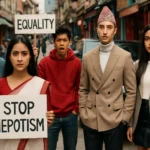On September 4, 2025, the Government of Nepal announced a temporary ban on multiple social media and messaging platforms, including Facebook, Twitter, and WhatsApp, saying the companies failed to register with the Ministry of Communications and Information Technology and meet local representation requirements.
The decision, publicized by Minister Prithvi Subba Gurung, affects users and businesses that rely on these media for daily communication, commerce, and information sharing. Officials said the move aims to address misinformation and other online risks while the government updates its digital rules.

WhatsApp and several other widely used apps are among those blocked, and many users are already seeking alternatives for personal and business use. For the official notice and ongoing updates, check the Nepal Telecommunications Authority and the Ministry of Communication’s advisory pages.
We summarize what changed, who is affected, and which social media and messaging services remain accessible below.
Recent Social Media Ban in Nepal
The government of Nepal has enforced sweeping restrictions on multiple social media and messaging platforms, citing national security and the spread of misinformation as primary reasons. Officials say the action affects millions of users and was carried out after platforms failed to complete required registration and local-representation steps.
Timeline of the Ban Implementation
Below is a concise timeline of the rollout based on official statements and regulatory directives.
Initial Announcement and Rollout
Minister Prithvi Subba Gurung announced the government’s decision and instructed the Nepal Telecommunications Authority (NTA) to act. The ministry had set a short deadline for platforms to complete the registration process; the NTA then issued a directive for enforcement, with major blocking measures implemented on September 4, 2025 (see official advisory for exact wording and reference numbers).
Enforcement Mechanisms
The NTA issued orders to internet providers to restrict access to noncompliant services. Internet service providers were asked to block listed apps as part of the enforcement process, and some carriers reported completing the technical steps within hours of the order.
Official Government Announcement
Government spokespeople reiterated that the move aims to prevent online hate speech, curb misinformation, and strengthen control over harmful content. The ministry framed the action as a temporary measure while it finalizes updated rules under the Ministry of Communications and Information Technology.
Key Officials Involved
Minister Prithvi Subba Gurung and senior officials at the Ministry of Communications and Information Technology coordinated the policy and enforcement steps, working with the Nepal Telecommunications Authority.
Public Statements
The government’s public statements emphasize national security and social harmony, language that has prompted debate over online censorship and the proportionality of the measure.
- The directive applies to major international and regional platforms that did not meet registration requirements.
- Regulators say the deadline and mandatory registration process are intended to ensure local accountability from foreign companies.
- Civil-rights groups have raised concerns about broad government powers to restrict access.
Complete List of Banned Social Media Platforms
The Nepal government has suspended access to a broad set of social media platforms, affecting both major international services and a number of regional and local apps. The official list and total number of affected platforms have been published by regulators; this summary is accurate as of the government advisory date (see NTA for updates).
These media platforms were commonly used for personal communication, business marketing, news sharing, and entertainment.
Major International Platforms Affected
The measures target several widely used global social media services.
Meta-owned Applications
Meta apps, including Facebook, Instagram, and WhatsApp, are listed among the affected services. These apps were central to many Nepali users’ daily information and commerce activities.
Other Global Platforms
Other international platforms named by regulators include Twitter and YouTube. (Note: reports about TikTok vary by source; verify the current status on the NTA advisory for whether TikTok is included or exempt.)
Regional and Lesser-Known Apps Included in the Ban
The directive also covers several regional messaging and content apps that the government says did not complete the mandatory registration process or provide required local representation.
Messaging Applications
Alongside global names, a number of messaging platforms used by Nepalese communities are on the list. For the definitive roster and exact scope, check the regulator’s published list.
Content Sharing Platforms
Content-focused services, including regional video and social-sharing apps, are also affected, disrupting user access to streams, groups, and channels that previously served as important local information sources.

Because lists and enforcement actions can change quickly, users and businesses should consult the Nepal Telecommunications Authority or the Ministry of Communications and Information Technology for the most recent platforms list and guidance on access and compliance.
Nepal Bans Facebook, Twitter, WhatsApp: Examining the Core Restrictions
The Nepal government has suspended access to key international social media and messaging platforms, most notably Facebook, Twitter, and WhatsApp. The measures have interrupted everyday online communication for millions of users and forced individuals and organizations to seek alternative channels for information and services.
Impact on Facebook Usage in Nepal
Facebook served as a primary hub for personal connections, community groups, and small-business marketing in Nepal. Before the restrictions, industry estimates placed Facebook’s user base in Nepal at several million — updateable with a citation to specific analytics providers or government figures for precision.
User Statistics Before the Ban
User count (pre-ban): reported at roughly 7 million Facebook users in Nepal — confirm with Meta reports or reputable analytics (e.g., DataReportal, Statista) when finalizing copy.
Current Access Status
Access to Facebook is reportedly restricted for many users; some are using Virtual Private Networks (VPNs) or alternative apps to reconnect. Note: the legality and enforcement around VPN use vary — check current Ministry/NTA guidance before advising readers to use circumvention tools.
Twitter Restrictions and Consequences
Twitter functioned as an important platform for real-time news, civic discussion, and posts from public officials and journalists. The restriction has disrupted the pace of news dissemination and reduced the availability of live commentary for events and political developments.
Political Communication Disruption
Political actors, journalists, and advocacy groups who relied on Twitter for announcements and mobilization now face delays and fragmentation in reaching audiences; alternative channels are less immediate and often less public.
News Dissemination Challenges
Newsrooms that used Twitter to amplify breaking stories report increased verification and distribution challenges; editors must now reroute alerts through other platforms or direct channels.
WhatsApp Communication Disruption
WhatsApp was the dominant messaging tool for households, diaspora connections, and many small-business customer-service workflows. The restriction has produced practical disruptions for personal and commercial exchanges.
Effects on Personal Communications
Many families used WhatsApp for cross-border calls, group chats, and file sharing. The ban has complicated routine contact with relatives overseas and the coordination of community groups.
Business Usage Limitations
Small businesses and e-commerce sellers who used WhatsApp for order management and customer support report added costs and friction as they migrate to alternative CRM and messaging tools. Where possible, companies are advertising new contact channels and updating storefronts to reduce lost sales.
| Private messaging, group coordination, and customer service | ||
| Personal networking, business pages, community groups | Disrupted personal connections and local digital marketing | |
| Private messaging, group coordination, and customer service | Hindered political communication and rapid news sharing | |
| Private messaging, group coordination, customer service | Disrupted personal and business communications; increased operational costs |
Government Rationale Behind the Social Media Ban
The government of Nepal says the recent decision to restrict a range of social media and messaging platforms is driven by national-security concerns and the need to curb online misinformation and hate speech. Officials frame the measures as temporary steps while regulators refine the country’s digital rules and enforcement mechanisms.
Official Justifications Provided
In public statements, senior ministry officials said the move aims to prevent the rapid spread of false information, online fraud, and content that could incite violence or social unrest. The action is presented as part of Nepal’s broader internet-policy update under the Ministry of Communications and Information Technology.
National Security Concerns
Authorities argue that some banned services did not comply with mandatory registration or local representation requirements, limiting regulators’ ability to hold overseas companies accountable for harmful posts or unlawful content.
Social Harmony Arguments
The government has also cited social-harmony goals, saying curbs on certain channels help reduce the spread of incendiary content that could inflame community tensions.
Underlying Political Factors
Critics say political context cannot be ignored: opposition leaders and civil-society groups view the restrictions as excessive and say they risk curbing legitimate political expression.
Recent Political Developments
Observers note the ban comes amid heightened political debate; opponents contend the measure concentrates media control in the hands of the state.
Opposition Criticism
Opposition parties and digital-rights advocates have criticized the move as a form of censorship that could suppress dissent. Some groups are reportedly preparing legal criticism and petitions; check updates for any formal filings with the Supreme Court or other legal challenges.

| Prevent misinformation, online fraud, and violence | ||
| National Security | A tool for broader information control | Suppress dissent; expand state control |
| Social Harmony | Reduce hate speech and inflammatory content | Tool for broader information control |
Total Number of Blocked Social Media Platforms in Nepal
The Government of Nepal has blocked access to 26 social media platforms, following non-compliance with mandatory registration and local representation requirements
Detailed List of Blocked Platforms
According to multiple reports, the following platforms have been blocked:
- Facebook Messenger
- YouTube
- X (formerly Twitter)
- Snapchat
- Discord
- Signal
- Threads
- Quora
- Tumblr
- Clubhouse
- Mastodon
- Rumble
- VK
- Line
- IMO
- Zalo
- Soul
- Hamro Patro
- Mi Video
- Mi Vike3
Social Media Apps That Remain Active in Nepal
While regulators have blocked a range of global services, several social media platforms and communication tools remain accessible in Nepal because they complied with registration or serve essential business/education functions. This shift has accelerated interest in both local alternatives and the use of international tools.
Domestic Alternatives Gaining Popularity
Following the restrictions, Nepal-based apps and regional messaging services have seen an increase in downloads and engagement as users seek compliant options that support local languages and payment systems.
Local Messaging Applications
Nepal-based messaging services and regional chat apps are gaining traction for everyday communications. Businesses and community groups are moving to these platforms for group coordination and customer contact while they assess longer-term strategies.
Nepal-based Social Networks
Homegrown social networks and community apps are expanding user bases, offering localized features and faster support for compliance with Nepal’s information-technology requirements. Where available, cite app-store statistics and developer statements to show uptake.
Active (Still Accessible) Social Media Platforms
Several platforms remain accessible because they adhered to government regulations by registering and setting up required local representation:
- TikTok
- Viber
- WeTalk
- Nimbuzz
- Poppo Live

International Platforms That Are Okay
Some international services used primarily for work and learning remain available. Companies are shifting internal communications and customer support to compliant business tools.
Business Communication Tools
Enterprise platforms such as Slack and Microsoft Teams are generally accessible and are being used to preserve remote collaboration, project management, and customer communications. Businesses should confirm service availability with their providers and update contact pages.
Educational Platforms
Online learning and virtual classroom platforms that comply with local rules continue to support students and professional training; institutions are notifying learners of recommended channels and backup plans.
Practical tips for users and businesses: export important contacts and chat histories now, update public-facing contact information (websites, store listings), and evaluate compliant platforms for migration. For a current list of accessible services and official guidance, consult the Nepal Telecommunications Authority and the Ministry of Communications and Information Technology.
Impact on Nepalese Citizens and Businesses
The social media restrictions in Nepal have immediate effects on daily life and the economy, disrupting how users communicate, how communities share news, and how businesses reach customers.
Daily Communication Challenges
Many people report interruptions to ordinary online communication channels that they used for family, work, and civic life.
Family Connections Disruption
Household groups and diaspora connections that relied on banned apps for voice, video, and group chats now face barriers to keeping in touch; community members and civil-society groups are seeking alternative channels and sharing guidance on migration steps.
Information Access Limitations
With fewer social feeds available, access to real-time local news and event updates is reduced, forcing many users to rely on traditional media or official portals for timely information.
Business and Economic Consequences
Small companies, freelancers, and e-commerce sellers that depended on social platforms for marketing, sales, and customer service are reporting operational strains.
Digital Marketing Setbacks
Digital marketing campaigns and business pages on affected media platforms are disrupted, reducing customer reach and leading to short-term revenue declines for many SMEs.
E-commerce Disruptions
E-commerce vendors that used social channels for order-taking and promotion must quickly reconfigure checkout and support flows, pay for new tools, or lose sales while migration happens.
| Impact AreaCitizensBusinesses | ||
| Communication | Interrupted family and community connections | Difficulty in customer outreach and support |
| Information Access | Less immediate access to local news | Reduced market intelligence and ad reach |
| Economic Impact | Disruption to creators and gig workers | Lost sales and extra migration costs |
Public Reaction to the Restrictions
Public response has ranged from peaceful protests to online campaigns using accessible channels. Civil-society organizations and ordinary users have organized petitions, and some groups are exploring legal challenges.
Protests and Demonstrations
There have been demonstrations in multiple urban centers as citizens express concern about the scope and duration of the restrictions.
Social Media Campaigns Against the Ban
Activists and affected communities are using available platforms and VPNs to coordinate responses, raise awareness, and share instructions for contacting authorities or seeking legal help. Note that the legality of VPN use depends on ongoing government guidance; check official updates before recommending circumvention tools.
The restrictions not only limit freedom of speech but also threaten livelihoods tied to online platforms. local small-business owner
Practical steps for users and businesses: export chats and contacts, update public contact information (website, payment pages), inform customers of new channels, and consult business associations or legal advisors for compliance guidance.
Historical Context of Internet Censorship in Nepal
The current restrictions on social networks build on a history of temporary shutdowns, content filtering, and evolving internet rules in Nepal. Understanding past measures and legal precedents helps explain how regulators reached this point.
Previous Social Media Restrictions
Nepal has previously imposed short-term blocks or throttling during periods of unrest, elections, or protests, measures the government described as necessary to maintain public order. Those episodes set a pattern of emergency restrictions that regulators say inform current policy.
Past Temporary Bans
Earlier temporary bans tended to be limited in scope and duration, often tied to specific incidents. When reviewing those cases, check government circulars and contemporaneous news reports for dates and official rationales.
Content Filtering Practices
Beyond outright blocks, authorities have at times used content-filtering and takedown requests to remove material they deem unlawful or inflammatory, particularly on political or communal topics.
Evolution of Digital Rights in Nepal
At the same time, digital rights awareness and legal frameworks have developed. Activists and civil society groups have pushed for clearer protections for online expression, judicial oversight, and transparency about censorship decisions.
Legal Framework Development
Legislation and regulatory rules affecting the internet and communications have been updated periodically; where relevant, court challenges have tested the balance between state security and individual rights.
Activism and Advocacy Efforts
Local and international advocates have campaigned for free and open internet principles in Nepal, filing complaints and raising public criticism when restrictions appear broad or indefinite.
These domestic tensions attracted international attention once the latest restrictions were announced.
International Response to Nepal’s Social Media Restrictions
The decision prompted reactions from human-rights organizations, technology companies, and foreign governments, who emphasized concerns about free expression and open internet access.
Human Rights Organizations’ Statements
Groups such as Amnesty International and regional digital-rights organizations expressed alarm, urging Nepal to ensure any limits are lawful, necessary, and proportionate and to preserve channels for civic discourse.
Tech Companies’ Reactions
Major platforms named in the restrictions issued statements expressing concern for affected users and pledging to engage with regulators; some companies also indicated they were evaluating compliance steps to restore service.
Diplomatic and International Responses
Foreign governments and multilateral bodies issued measured reactions: some neighboring countries urged restraint and dialogue, while Western governments highlighted the importance of protecting expression and due process. Watch for formal diplomatic notes and press releases for precise language.
Legal updates: if challenges are filed, the Supreme Court may be asked to consider the rulingability of nationwide blocks; track petitions and court dockets for authoritative developments.
How to Stay Updated on Nepal’s Social Media Ban News
To stay informed, users should:
- Regularly check updates from nta.gov.np.
- Follow trusted international sources such as BBC News.
- Keep an eye on local news portals for government notifications.
Conclusion: Future of Social Media Access in Nepal
The short-term outlook for social media in Nepal remains uncertain following the government’s decision to restrict access to multiple major social media and messaging platforms. Regulators say the measures are conditional and tied to compliance with registration and local-representation requirements; whether the ban is lifted will depend on ongoing discussions between the government, the platforms, and regulators.
International attention and domestic debate mean changes could come quickly or may take time as legal and administrative processes play out. Users and businesses should monitor official channels for any updates on timelines, deadlines, or directives from the Ministry of Communications and Information Technology and the Nepal Telecommunications Authority.
Practical next steps: if you are a user or a business, back up important chat histories and contacts, update public-facing contact information to list alternative channels, and consult provider support or business associations about migration plans and compliance.
FAQ
Why did Nepal ban Facebook, Twitter, and WhatsApp?
Authorities say these platforms did not meet mandatory registration and local-representation rules under new internet-policy requirements. The government has framed the action as a public-safety step to address misinformation and harmful content, though critics dispute the proportionality of the move.
What social media platforms are banned in Nepal?
Regulators have published lists naming major international apps and several regional services; the precise roster can change. Check the Nepal Telecommunications Authority or the Ministry of Communications and Information Technology for the authoritative, up-to-date list.
How has the ban affected Nepalese citizens and businesses?
The restrictions have interrupted everyday communication for many users, complicated news distribution, and disrupted digital marketing and customer-service workflows for businesses. Some entities report lost revenue and additional costs as they migrate to alternative channels.
Are there any alternative social media platforms available in Nepal?
Yes. Several Nepal-based apps and compliant international business and educational tools remain accessible. Businesses should verify which platforms their customers can reach and update contact information accordingly.
What is the historical context of internet censorship in Nepal?
Nepal has used temporary blocks and content filtering in past periods of unrest or political tension. Those precedents and related court challenges inform how regulators and the judiciary may handle the current situation.
How has the international community responded to Nepal’s social media ban?
Human-rights organizations, tech companies, and several foreign governments have expressed concern about free-speech implications and urged transparency. Platforms have engaged with regulators to explore compliance options.
Can the banned social media platforms resume services in Nepal?
Potentially. Regulators indicate services could be restored if platforms meet registration and local-representation requirements or otherwise comply with the relevant directive. Track official updates for any changes in status or specific orders about reinstatement.
What are the implications of the social media ban for digital rights in Nepal?
The case spotlights tensions between state security objectives and protections for freedom of expression, access to information, and digital livelihoods. Legal challenges possibly reaching the Supreme Court could clarify the balance and set important precedents.
ALSO READ NEPAL INDIA CURRENCY UPDATE
- Banking Apps
- Best Deals
- Credit Cards
- Earning Apps
- Health Insurance
- Instant Loan Apps
- Jobs
- Life Insurance
- Trending Topic











